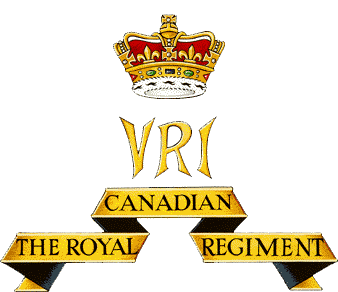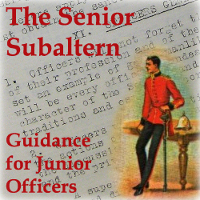
Standing Orders of
The Royal Canadian Regiment
(1935)
I The Commanding Officer
1. On the Commanding Officer devolves ultimately the sole responsibility for the training, discipline and interior economy of the Regiment both in the field and in quarters. His authority, whether exercise on parade, in the Messes and Institutes, or in any other situation, is therefore paramount, and his decision on all questions is final.
2. He is responsible for the custody of the Regimental Records of officers, warrant officers, non-commissioned officers and men; for appointments and promotions of non-commissioned officers above the rank of Corporal and for transfers within the Regiment.
3. He will inspect the Stations of Detached Companies annually. Such inspections will be with particular view to the following points:-
(a) That the Officers’ and Sergeants’ Messes, respectively, are conducted in accordance with the provisions of K.R. & O., and on similar lines throughout the Regiment.
(b) That officers’ dress is uniformly in accordance with the regimental pattern.
(c) That the dress, clothing and equipment of all ranks is worn according to regimental custom.
(d) That in rendering returns, and in making entries in Guard Reports, Conduct Sheets and similar records, a uniform system is observed.
(e) That no grievances exist in respect of uneven promotion among the non-commissioned officers.
(f) That Canteens and all Regimental Institutes are conducted in accordance with the provisions of K.R. & O. and on similar lines throughout the Regiment.
(g) That, subject to the control of the local District Officer Commanding, the system of training of officers, non-commissioned officers and recruits, and of attached officers and non-commissioned officers, is uniform throughout the Regiment.
II An Officer in Temporary Command
1. An officer in temporary command may not, on his own authority, issue new Standing Orders nor amend existing ones.
2. He may not issue orders, other than Routine Orders, nor grant leave or furlough, which would take effect after the period of his temporary command.
3. He may not appoint or promote non-commissioned officers, but may grant acting rank and temporary appointments where necessary.
III The Second-in-Command
1. The Second-in-Command will assist the Commanding Officer in the military instruction of junior officers, in the maintenance of discipline and in matters of administration generally. He is especially charged with the interior economy of his battalion.
2. He will be the president of the Regimental Institutes, and as such will be responsible for the management and accounting of the Regimental Institutes, the Sergeants’ Mess and the Regimental Workshops.
3. He will supervise the cooking and messing throughout his battalion and will audit all accounts therefor. He will arrange the sale of all refuse from cookhouses and will credit the amounts so received to the messing funds each month.
4. He will at all times give younger officers the benefit of his advice and encourage them to seek it. He will see that they acquire a thorough knowledge of their duties and that they are correct and regimental in their conduct and dress.
5. He will exercise a general supervision over the weapon training of the companies. He will directly supervise the weapon training of recruits and the revolver courses for officers. He will conduct the judging-distance and range-finding tests throughout the battalion.
IV Officers Commanding Stations
1. Officers commanding Stations will, on all matters of a regimental nature, correspond directly with the Officer Commanding the Regiment.
2. On all matters not strictly regimental they will correspond through the local District Officer Commanding.
3. They will permit no deviation from the regimental uniform on the part or either officers or other ranks, and will, at all times and in all manners, maintain the regimental customs and foster the regimental spirit.
4. They will appoint and promote non-commissioned officers up to and including the rank of Corporal and will submit to the Officer Commanding the Regiment their recommendations for promotion to higher rank. They will keep the Officer Commanding the Regiment informed of the character, capacity, and any special aptitude of warrant and non-commissioned officers of and above the rank of Sergeant, and of non-commissioned officers below that rank who are deserving of special notice.
5. The Officer Commanding a Station is an officer commanding a unit, and will, therefore, subject to the Officer Commanding the Regiment, be guided by the regulations and customs of the service regarding Commanding Officers.
Standing Orders of The Royal Canadian Regiment (1935)
- The Commanding Officer
- An Officer in Temporary Command
- The Second-in-Command
- Officers Commanding Stations
- Officers Commanding Companies
- Seconds-in-Command of Companies
- The Adjutant
- The Signalling Officer
- The Quartermaster
- Subaltern Officers
- Officers Generally
- Warrant Officers
- The Regimental Sergeant Major
- Orderly Room Clerks
- The Sergeant Cook
- The Sergeant-Tailor
- Non-Commissioned Officers Generally
- The Band
- Employed Men Generally
- Officers' Servants
- Married Soldiers
- Soldiers Generally
- Battalion Parades
- The Colours
- Passes
- The O'Leary Collection; Medals of The Royal Canadian Regiment.
- Researching Canadian Soldiers of the First World War
- Researching The Royal Canadian Regiment
- The RCR in the First World War
- Badges of The RCR
- The Senior Subaltern
- The Minute Book (blog)
- Rogue Papers
- Tactical Primers
- The Regimental Library
- Battle Honours
- Perpetuation of the CEF
- A Miscellany
- Quotes
- The Frontenac Times
- Site Map
QUICK LINKS

- The Senior Subaltern
- Staff Duties and the Young Officer
- How to Write Effective English
- Notes and Quotes - Staff Duties
- Advice to Officers (1782)
- Mess Rules of the Infantry School (1884)
- A Dozen Military Epigrams (1901)
- How The Loafer's Bred (1904)
- The Promotion and Examination of Army Officers (1904)
- A Few Tips for Officers, Before and After Joining (1906)
- Standing Orders of The RCR (1910)
- Standing Rules for Officers' Messes of The RCR (1913)
- The Young Officer's Guide to Knowledge (1915)
- The Duties of an Officer (1916)
- An Open Letter to the Very Young Officer (1917)
- Advice to a Young Officer (1917)
- Battalion Duties; Officers, NCOs, and Soldiers (1917)
- Pleasing Infantry Brigadiers (1917)
- Role and the Responsibilities of the CO in a Battalion Mess (1917)
- The RCR, "A" Company Standing Orders (1918)
- Some Staff Duties (1923)
- An Officer's Code (1925)
- Hints on Promotion Exams (1925)
- On Writing Appreciations (1926)
- The RCR; Rules for Officers' Messes (1927)
- Morale And Leadership (1929)
- RCSI Hints for Young Officers (1931)
- RCSI Notes on Drill (1931)
- The Study of War by Junior Officers (1932)
- Self-Training (1934)
- "The Problem of the First Ten Years" (1934)
- Standing Orders of The RCR; 1935)
- Customs of the Service (1939)
- Drill and Discipline (1939)
- Leaders Win Where Commanders Lose (1939)
- The Officer and Fighting Efficiency (1940)
- Officers' Mess (RCAF, 1940)
- The Duties of an Officer (1942)
- Comrades in Arms (1942)
- Example Standing Orders - Subalterns (1942)
- Hints for Newly Commissioned Officers (1943)
- Completed Staff Work (1943)
- FOLLOW-ship (1943)
- Hints for Junior Officers (1945)
- Officer-Like Qualities (1948)
- Military Writing (1948)
- An Analysis of the Sub-Unit Commander (1949)
- Leadership (1950)
- Neptune's Notes (undated, 1950s-60s)
- Thinking and Writing (1953)
- Examination Tactics (1953)
- Officers (1954)
- On Writing Examinations (1954)
- Customs of the Army (1956)
- 1st Bn, The RCR, Senior Subaltern (1956)
- Pigs Have Wings (1960)
- Leadership and Man Management (1960)
- Officers (1964)
- 1RCR - The Sergeants' Mess - "Tips" (1971)
- 2RCR Junior Officer's Handbook (1973)
- How to be a Successful Subaltern (1978)
- Foreword to the Infantry Journal, No. 8 (1979)
- Do You Appreciate the Finer Points of Life? (1980)
- The RCR Regimental Standing Orders - Senior Subaltern (1992)
- Infantry Company Command (2016)
- A Miscellany of Advice for Subalterns
- The Young Officer and the NCO - Quotes
